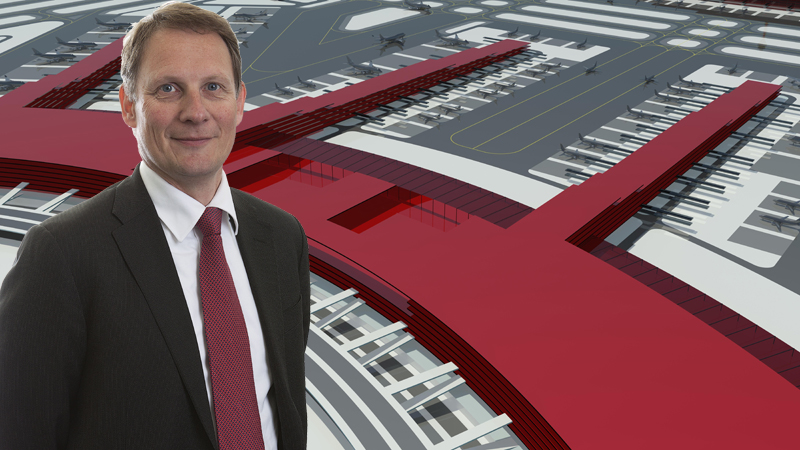In 2017 the Beijing New International Airport (BNIA) will open for business and will then become the world’s largest airport in terms of aircraft movements. Clearly such a large airport needs an extraordinary master plan. NACO, a Dutch airport planning company recently won the design for the master plan – we wrote about it in our weekly news. We now have the chance to speak to NACO’s managing director, Rik Krabbendam to ask him a few more questions.
Mr. Krabbendam, what does it mean for NACO winning the master plan for Beijing’s Domestic airport?
This is a milestone for NACO. This size airport has never before been planned. We see this master plan as the next step in airport planning and we are proud that our planners have been able to understand the complexities and turn it into a working scheme.
Can you tell our readers more about what makes that new airport challenging from a design point of view?
Size, passenger numbers, airport city planning, logistics for passengers, baggage, freight, deliveries, parking, employees, ground transportation, phasing. Given the expected ‘point to point’ traffic character of the new airport (low transfer rates) results in an airport that is about 150% of the current largest airport [Atlanta, IATA: ATL] in terms of aircraft movements. The landside traffic demand however will be three times of what Atlanta is facing. The biggest challenge for the design team therefore was to channel those enormous flows of passengers and employees from and to the airport over different modes of transport in such way that the airport remains accessible at any time.
You said your plan convinced the judges also because of its attention to sustainability. Can you give us some more details?
Careful planning of an ultimate layout, with flexible intermediate stages that allows to anticipate to changes in traffic patterns and/or airline markets, accelerate or slow down or even stop the development process at any time are already essential elements of a no regret approach. This prevents inefficiencies in the airport operations. Also optimal planning of taxiway system to limit aircraft ground movements to save on fuel and carbon emission contributes to sustainability. And of course multi model, fully integrated ground transportation with high speed railways, light rail and urban metro connections are important elements. Just in time phasing is important to prevent over- or undercapacity during any period in the future.
In 2003 NACO already won the design and master plan for the new terminal at the existing airport, Beijing Capital International Airport (IATA: PEK). Were you able to apply what you learnt then and from how the airport operated since its opening?
NACO has prepared numerous airport master plans and also studied the development of airports around the world, in order to build our expertise and skill in airport master planning. All this combined has been used to work out the scheme for BNIA.
More generally, what do you think makes a good airport?
The appreciation for an airport is partly based on good planning and design, but just as well on the reliability and efficiency of operations and the services provided on the airport. While planning and designing we naturally strive for customer satisfaction, but keep also in mind the well being of workers in the airport and the communities surrounding the airport.
What are some elements airports should try to avoid in a design & planning stage?
Well balanced solutions require to build big enough to offer an attractive environment, but not too big as this increase capital and operational cost. Also sizing of the airport as a whole should be such that with rising demand no choke points are created that constrain capacity. Inflexibilities should also be avoided, because an airport master plan should always have flexibility built-in to anticipate to unforeseen developments in aviation.
Thanks you very much for your time, Mr. Krabbendam.
You’re welcome.

